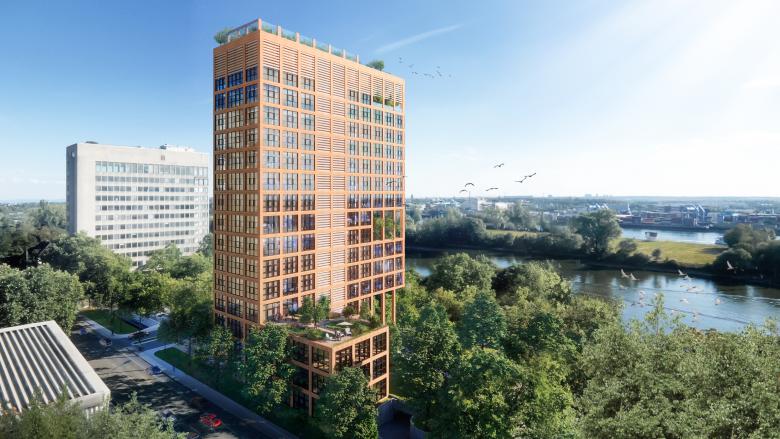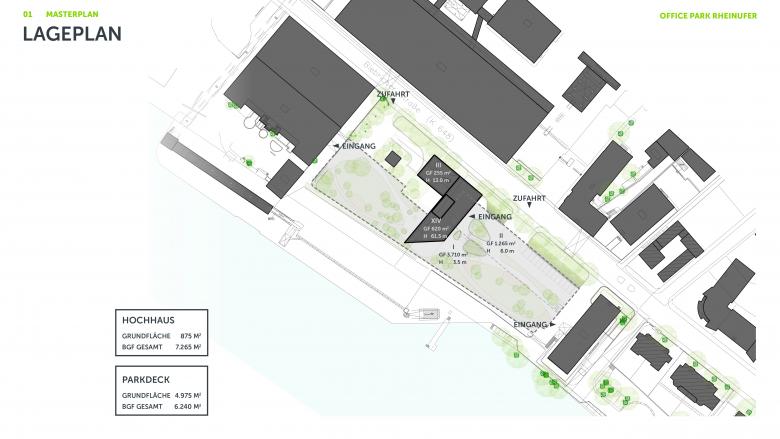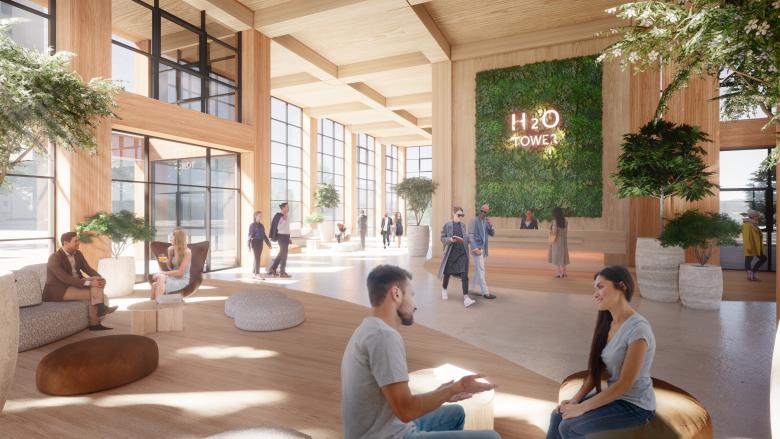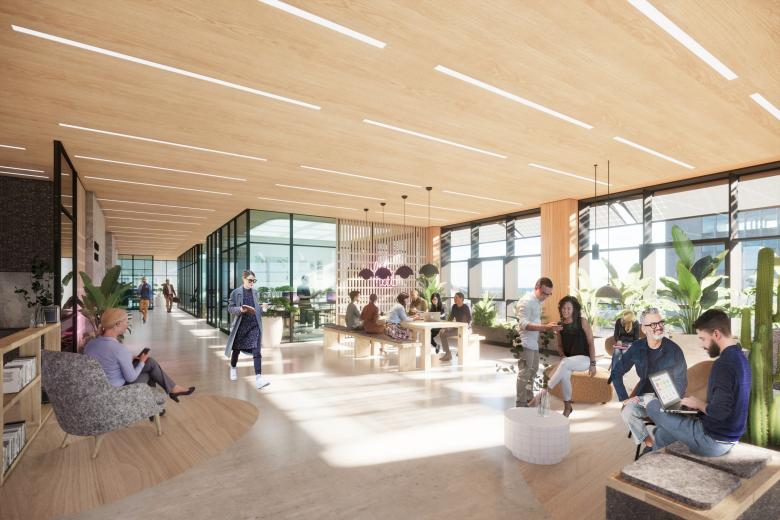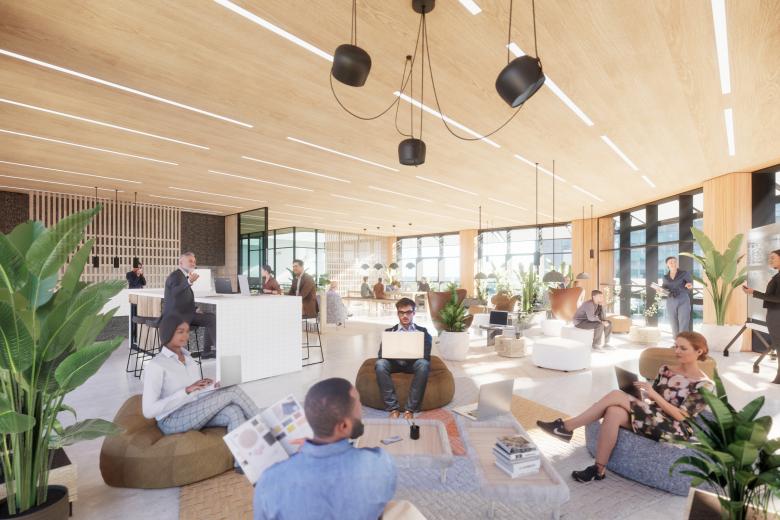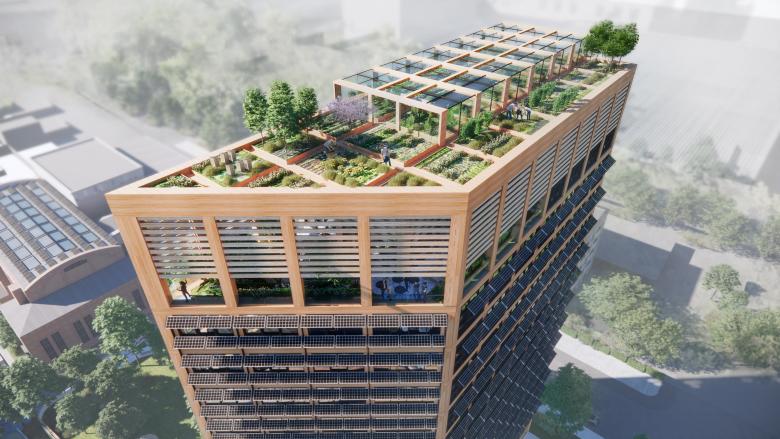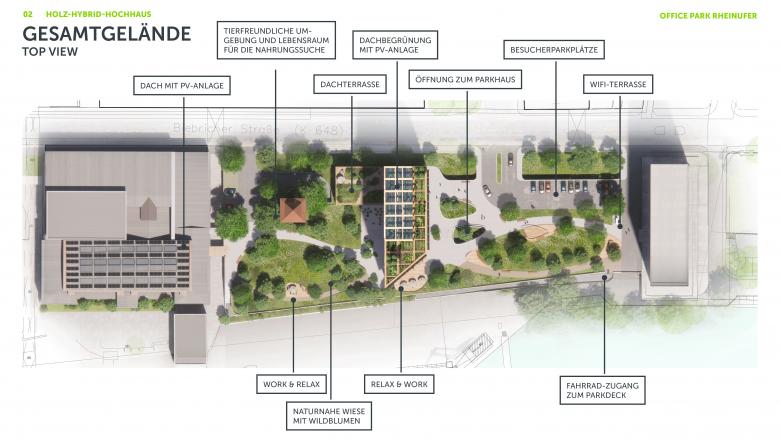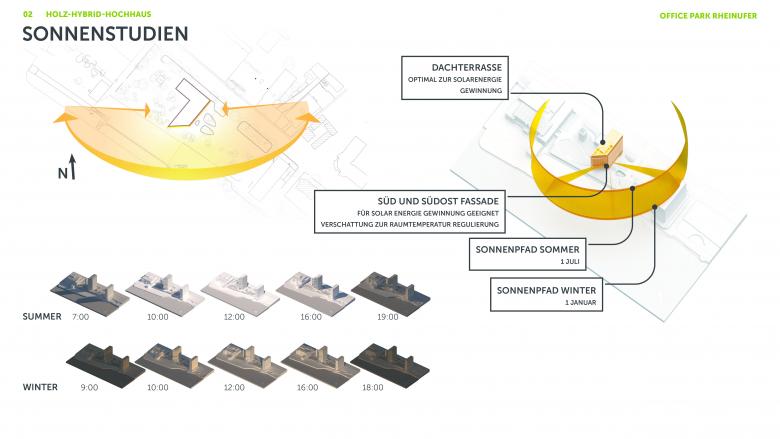H2 Office Tower
Wiesbaden, Germany
The H2-Office-Tower is part of a redevelopment site located on Wiesbaden's Rhine riverfront that serves as a model for sustainable, smart and future-oriented urban development. The project comprises the conversion of a former industrial wasteland to a campus-like site that considers all the requirements of modern office and work culture in a densely populated urban environment: CO2-reduced new construction alongside resource-saving redevelopment in addition to green densification, creating urban biotopes and encouraging micro mobility.
The architectural studio 3deluxe was commissioned by the Wiesbaden urban development company SEG to identify various utilization and design options and to investigate how the site between the industrial park and the Rhine meadows can be developed with a promising future. The site's innovation driver will be the construction of an appealing timber-hybrid high-rise building that, along with a listed classic high-rise from the 1960s, forms the core of the site.
3deluxe aims to create a clear, reduced office high-rise building with a straight, urban and modern look that will set new architectural and urban development standards in an industrial neighborhood characterized by concrete production.
The regular rectangular grid of the visible wooden structure enables modularity and prefabrication of the facade and offers a formal affinity to the listed high-rise twin. Large floor-to-ceiling window areas and their black frame structure lend the building its modern warehouse appearance and create a reference to the industrial neighborhood.
The use of sustainable and renewable raw materials, the modular construction with a high degree of pre-fabrication as well as the recyclability of the planned building components are key features of the circular construction method. Energy generation is largely planned to be directly on the building: integrated large scale PV-systems, geothermal energy and use of the river water as heat exchanger maximize low-emission operation.
Primarily, climatic and energetic considerations determine the basic layout of the 15-story high-rise building. The facades facing the sun are partially covered with photovoltaic modules, which also serve as shading elements. The orientation of the Rhine facade has been twisted diagonally and thus optimized to the sun's position to achieve maximum efficiency from the large-scale integration of the photovoltaic modules.
Regarding the neighboring high-rise building from the 1960s, the H2O-Tower is given the slender form that was characteristic of that time: The core is not positioned centrally but rather laterally in the façade. This provides generous room space to accommodate modern office formats for the post-corona age: office space that is open and participative, allowing for hierarchy-free, flexible working. In the basement is an incubation space for young companies and a light-flooded foyer as a communicative platform for the entire campus area.
The outdoor area around the building is primarily dominated by green, communicative and recreational areas right on the waterfront - a car-reduced, verdant site offering outdoor facilities in line with the shift in mobility, including bike parking, car and bike sharing, a bike repair shop, and load bikes for transporting heavy goods. An outdoor gym, a recreation pavilion, wildflower meadow, beehives, and shelters for birds condense the area into an urban oasis.
The building concept intends to provide some space for nature: Integrated into the building are several green terraces, which enhance the quality of time spent in the building and contribute to improving the city's climate. On the roof, a vegetable garden and greenhouse are integrated to supply the in-house staff restaurant with fresh products. Bird and insect nesting areas are planned on the closed facade of the utility core. The building will be designed to be as "animal friendly" as possible to improve the coexistence of humans and nature in the built environment.
»Architecture today has to consider many more issues than just functionality or beautiful design. The massive global challenges we are currently facing are all reflected in architecture and urban planning, giving every building project a significant relevance to society as a whole. Exciting times!« Dieter Brell, creative director 3deluxe
- Architects
- 3deluxe
- Year
- 2022-
- Client
- SEG
- Brief
- Design and utilization study for the former Dyckerhoff site on the banks of the Rhine in Wiesbaden.
